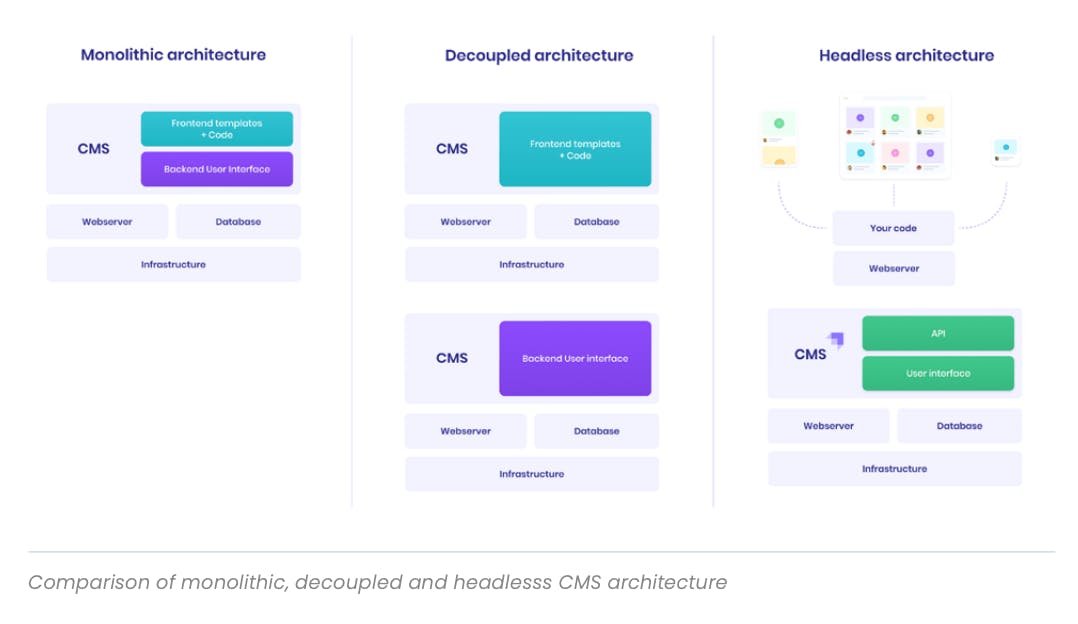

Strapi is an open-source headless content management system (CMS) that provides developers with a flexible and customizable backend for content-driven applications. As a headless CMS, Strapi separates the content management backend from the frontend presentation layer, allowing developers to use their preferred frontend technologies while leveraging Strapi's powerful API-driven content delivery.
Key features of Strapi include its customizable content types, built-in user management system, and extensibility through plugins. Strapi offers both RESTful and GraphQL APIs out of the box, making it easy to integrate with various frontend frameworks and applications. The CMS also provides a user-friendly admin panel for content editors to manage and publish content efficiently. Strapi's flexibility makes it suitable for a wide range of use cases, including websites, mobile apps, e-commerce platforms, and API development projects. Its open-source nature and active community contribute to its continuous improvement and adaptability to diverse development needs.
Strapi offers a straightforward installation process using its Command Line Interface (CLI). To get started, ensure you have Node.js installed, then run npx create-strapi-app@latest my-project to create a new Strapi project. During installation, you can choose between a quick start option with SQLite or a custom setup for other databases. Once installed, navigate to the project directory and run npm run develop to start the Strapi server.
The initial setup involves creating an admin user through the browser interface that opens automatically. After logging in, you'll access the Strapi admin panel, which provides an intuitive interface for managing content types, user roles, and plugins. The admin panel allows you to create and edit content, manage media assets, and configure API permissions, all through a user-friendly dashboard. This centralized control center streamlines content management and application development, making Strapi an efficient choice for developers and content creators alike.
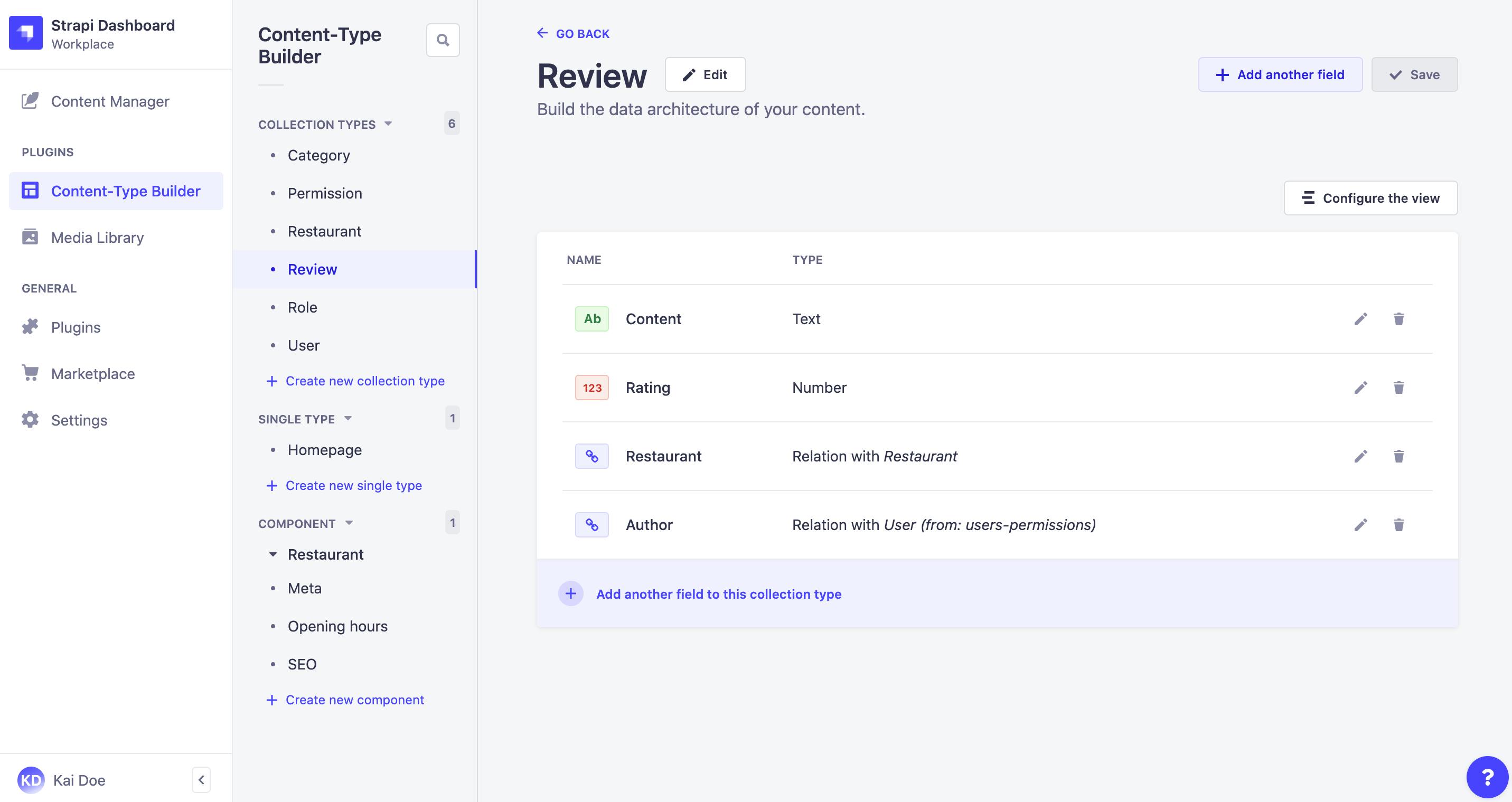
Strapi's Content-Types Builder allows developers to create and manage structured content types, including collection types, single types, and components. Accessible in development environments, this tool enables the creation of custom fields and relationships between content types.
The Content Manager provides an intuitive interface for content editors to create, edit, and publish entries based on these content types. It offers features such as filtering, sorting, and bulk actions for efficient content management.
The Media Library in Strapi facilitates advanced asset management, allowing users to upload, organize, and reuse media files across different content types.
This comprehensive approach to content management in Strapi ensures flexibility and ease of use for both developers and content creators.
Strapi's plugin system allows for extensive customization and extension of its core functionality. Developers can create custom plugins to add new features or modify existing ones, enhancing Strapi's capabilities to meet specific project requirements.
The plugin development process involves using Strapi's CLI to generate a plugin structure, choosing between JavaScript or TypeScript, and implementing desired functionality through server-side and admin panel extensions.
Popular plugins available from the Strapi Marketplace can be easily installed to add features like internationalization, GraphQL support, or enhanced media management. Strapi also provides APIs for plugins to hook into various features, allowing developers to register with the server and admin panel through entry point files like strapi-server.js and strapi-admin.js.
This flexibility enables developers to tailor Strapi to their exact needs while maintaining the core benefits of the CMS.
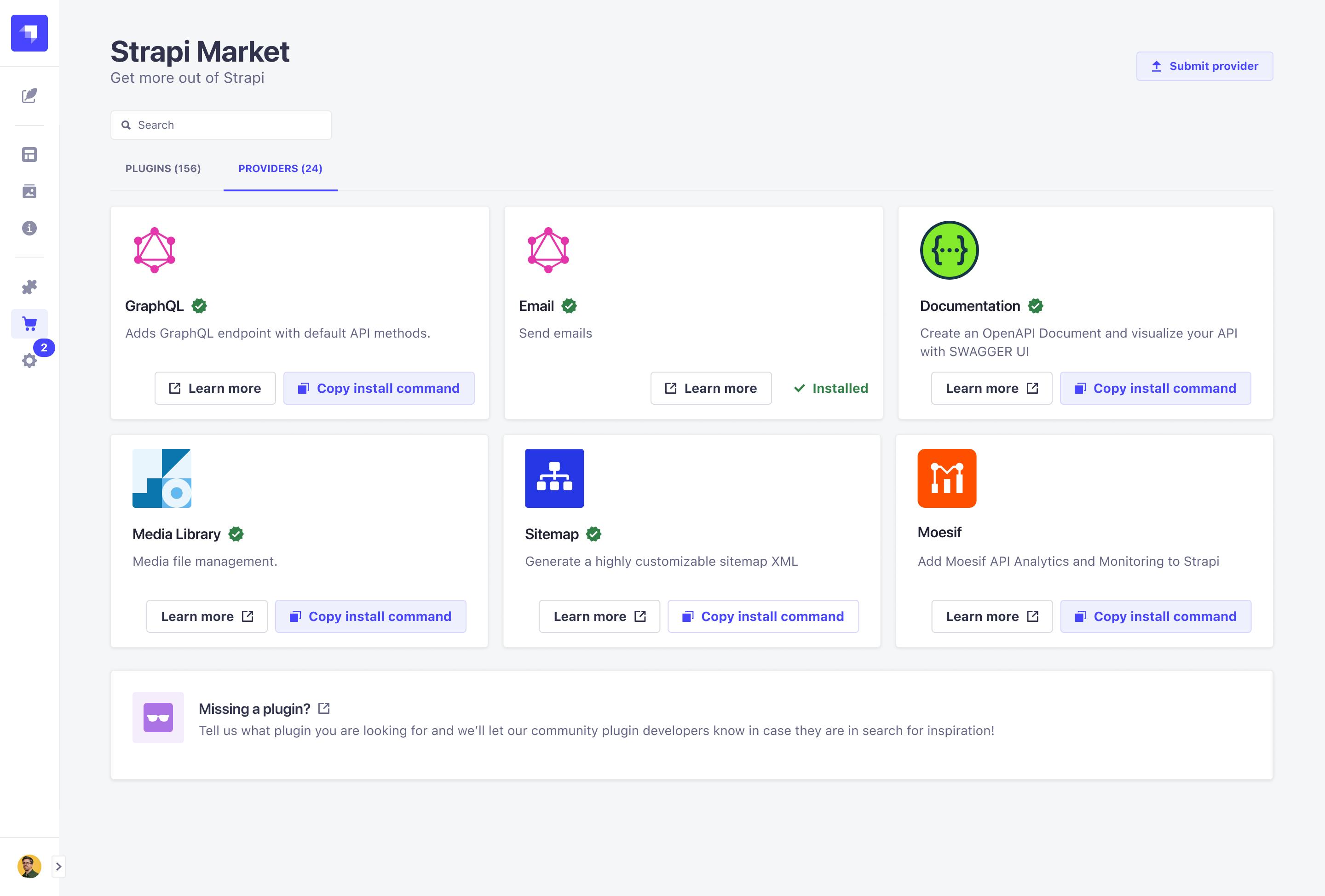
Strapi provides powerful API capabilities for managing and accessing content through both REST and GraphQL endpoints. The Content API is automatically generated for each content type, allowing developers to easily retrieve, create, update, and delete entries.
By default, all content types are private and require proper authentication, but can be made public if needed. Strapi's API supports various parameters for filtering, sorting, and pagination, enabling fine-grained control over data retrieval. The Entity Service API is recommended for interacting with the database within the backend server or through plugins, handling complex data structures like components and dynamic zones.
For more advanced use cases, the Query Engine API offers lower-level access to the database layer. Strapi's flexible API architecture allows developers to customize controllers and services, extending the default functionality to meet specific project requirements.
Strapi prioritizes security and performance with a range of built-in features and best practices. The platform offers granular user roles and permissions, allowing administrators to control access to content and functionalities precisely. Strapi implements encryption for data at rest, using AES-256 algorithm for database servers and backups in Strapi Cloud.
To enhance security, developers can implement additional measures such as input validation, data sanitization, and proper policy usage.
For performance optimization, Strapi supports various database options and integrates seamlessly with popular front-end frameworks, enabling developers to build efficient and scalable applications. Regular vulnerability scanning and web application firewall (WAF) integration further bolster Strapi's security posture, making it a robust choice for enterprise-level deployments.
Strapi offers various deployment and hosting options to suit different project needs and scales. Cloud providers like AWS, Google Cloud, and Azure provide robust infrastructure for hosting Strapi applications, offering services such as managed databases, auto-scaling, and load balancing.
For simpler setups, Platform as a Service (PaaS) options like Heroku and DigitalOcean's App Platform can streamline deployment processes. Containerization with Docker and orchestration with Kubernetes can enhance scalability and ease of deployment.
For those prioritizing cost-effectiveness and simplicity, options like using SQLite with attached persistent disk storage are available, though they may limit scalability.
When deploying, it's crucial to consider factors such as database choice, media file storage solutions, and the specific requirements of your project to ensure optimal performance and scalability.
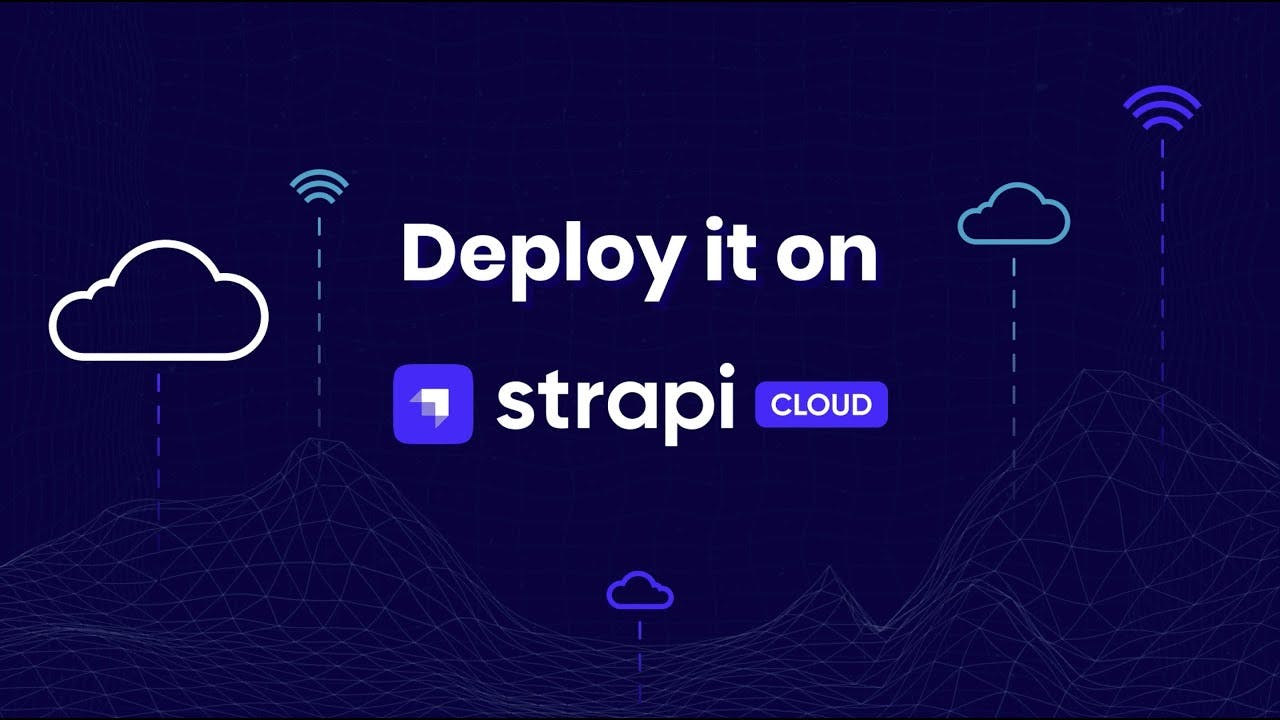
Strapi offers advanced features that enhance its functionality and customization capabilities. Role-Based Access Control (RBAC) allows administrators to create and manage custom roles with specific permissions, ensuring granular control over user access to different parts of the application.
The admin panel can be extensively customized, including replacing logos, modifying the theme, and extending translations, allowing developers to tailor the interface to their brand or specific needs. Strapi also supports integrations with various third-party services through its plugin system and API capabilities, enabling developers to extend the CMS's functionality and connect it with external tools and platforms.
These advanced features make Strapi a versatile and powerful solution for complex content management needs across various industries and use cases.
Strapi has been successfully implemented by numerous companies across various industries, demonstrating its versatility and effectiveness as a headless CMS solution. These case studies highlight the real-world applications and benefits of using Strapi in different contexts.
One notable example is BrandiumPro, a company that leveraged Strapi to boost online orders for restaurants. According to a case study, BrandiumPro was able to increase online orders by 5 times using Strapi CMS. This significant improvement showcases Strapi's ability to enhance e-commerce capabilities and drive business growth.
Strapi has also proven valuable for corporate websites. The platform offers faster and more flexible solutions compared to traditional monolithic CMS like WordPress, while being easier to integrate than typical headless CMS options. This makes Strapi an attractive choice for companies looking to showcase their brand identity, values, and company news efficiently.
In the telecommunications sector, Palmabit, an IT company, utilized Strapi as an omnichannel CMS for Intred, a telecom provider. This implementation demonstrates Strapi's capability to handle complex content management needs across multiple channels, a crucial feature for modern businesses operating in diverse digital environments.
Strapi's impact extends beyond just content management. Canny, a product feedback platform, conducted a case study on how Strapi uses their tool to interact with their community and close more deals. The study revealed that Strapi doubled their number of interactions after adopting Canny, leading to a 100% increase in comments and improved customer satisfaction. This showcases Strapi's commitment to community engagement and continuous improvement based on user feedback.
The case study also highlighted how Strapi's use of Canny helped various teams within the company:
Importantly, Strapi's Chief Product Officer, Aurélien Georget, noted that the tool even helps them win deals. When a prospect requests a feature, the sales team can easily log it and follow up once it's shipped, providing full visibility into the development process for customers.
These real-world examples demonstrate Strapi's versatility across different industries and use cases. From boosting e-commerce performance to enhancing corporate communications and improving customer engagement, Strapi has proven to be a powerful tool for businesses seeking a flexible and efficient content management solution.
Strapi CMS has emerged as a powerful and flexible solution for content management, offering developers and content creators a robust platform for building scalable, customizable applications. Its open-source nature, coupled with features like customizable content types, built-in APIs, and extensive plugin ecosystem, make it suitable for a wide range of projects from simple websites to complex enterprise applications.
The platform's focus on developer experience, coupled with its user-friendly admin panel, strikes a balance between technical flexibility and ease of use for content managers. While Strapi excels in many areas, it's important to consider project-specific requirements, as some users have reported challenges with complex data modeling and mobile editing interfaces.
As Strapi continues to evolve with frequent updates and strong community support, it remains a compelling choice for those seeking a modern, headless CMS solution.
We as Notum Technologies try to stand out as a specialized Strapi agency, offering unique expertise and solutions for businesses looking to leverage the power of this headless CMS. Here's why partnering with Notum for your Strapi projects can be advantageous:
By choosing Notum as a Strapi agency, businesses can benefit from specialized expertise, custom solutions, and a deep understanding of the Strapi ecosystem, potentially leading to more robust, efficient, and innovative implementations of this powerful headless CMS.
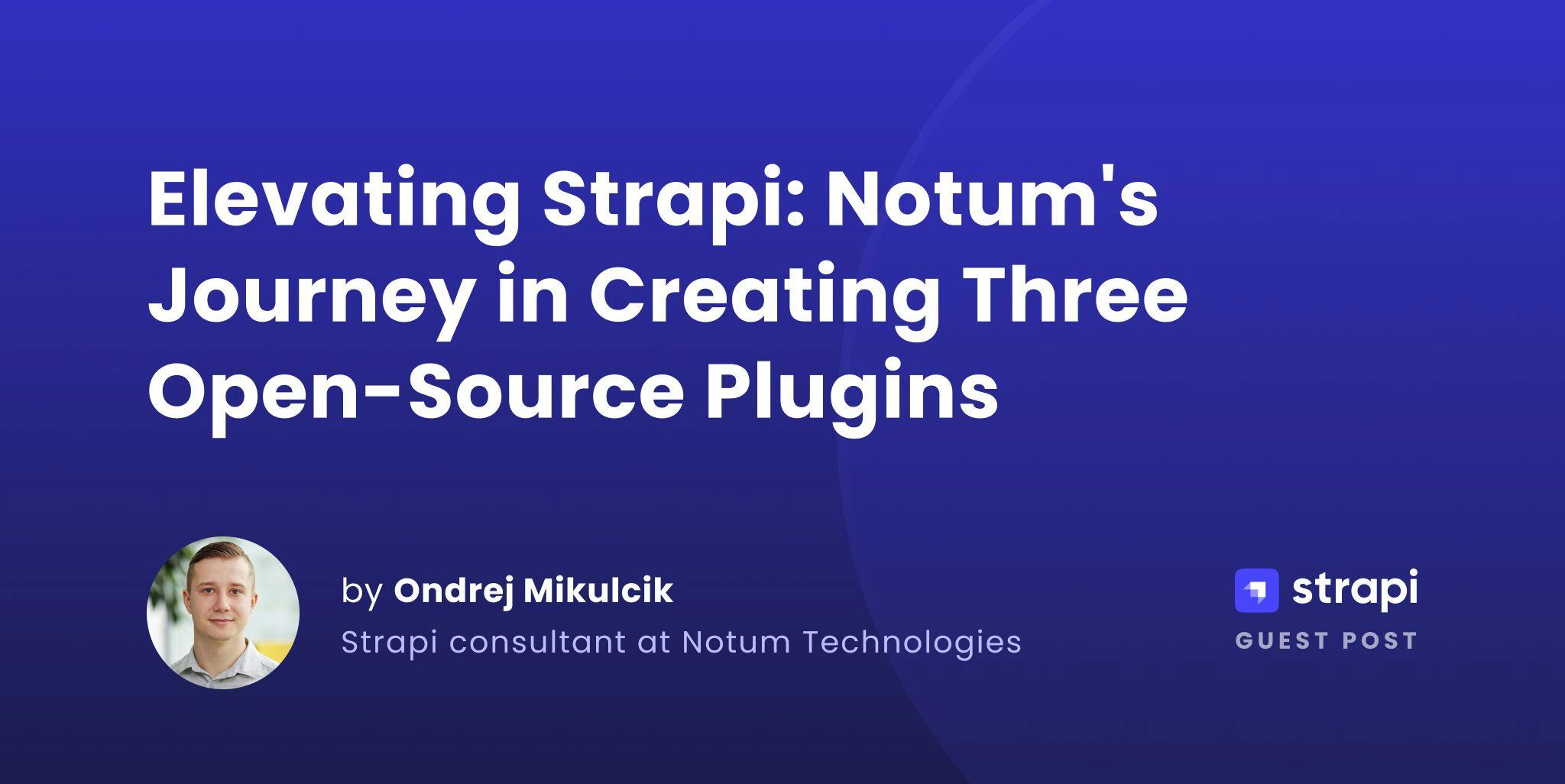
We're Notum Technologies:
✔️ Official STRAPI agency in Europe and America, based in the Czech Republic.
✔️ We offer custom STRAPI development, consultations, web, and mobile apps.
✔️ With 40+ completed STRAPI projects, many workshops, open communication, and great project management, we have the tools to make your project a success.
